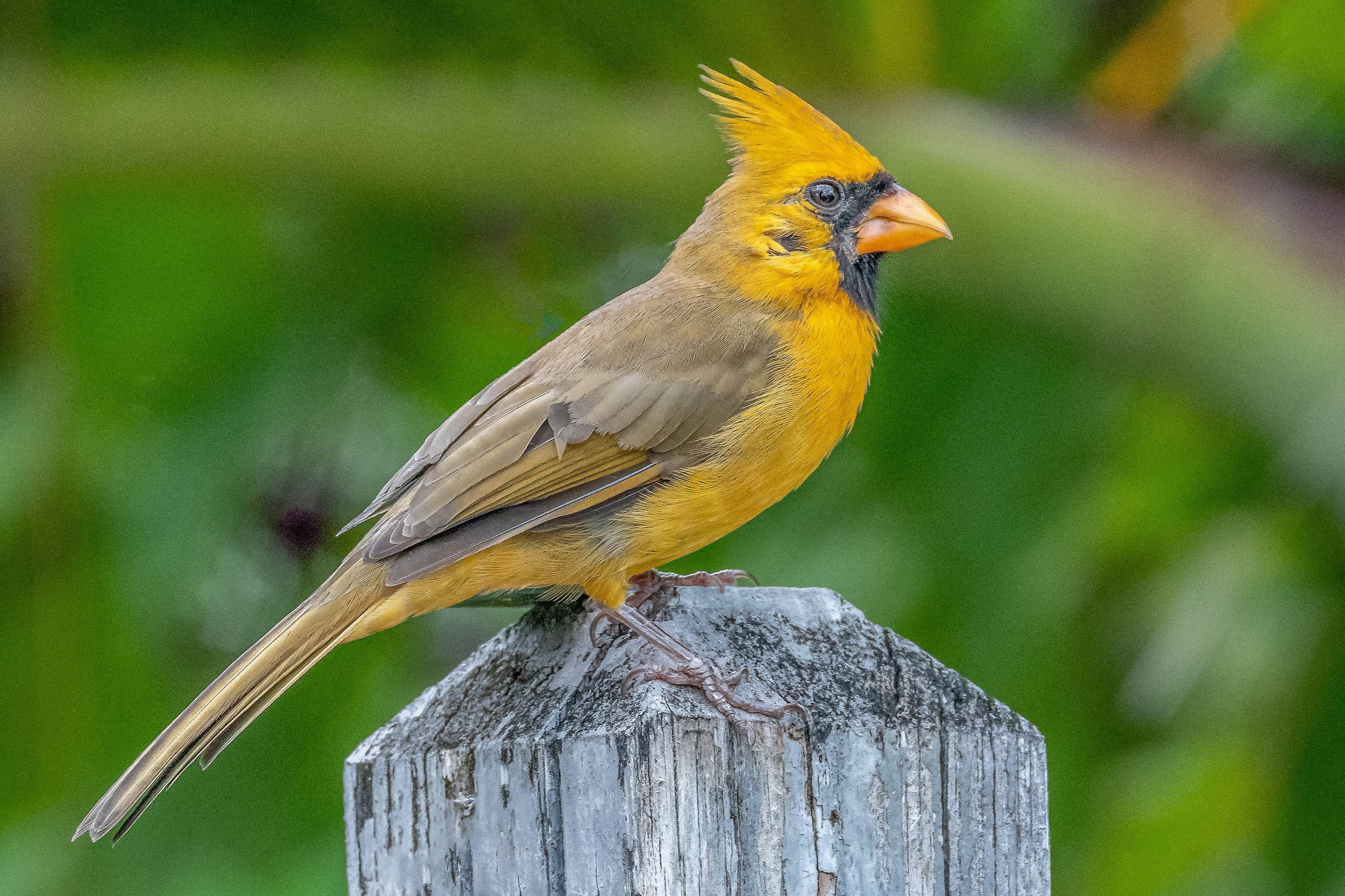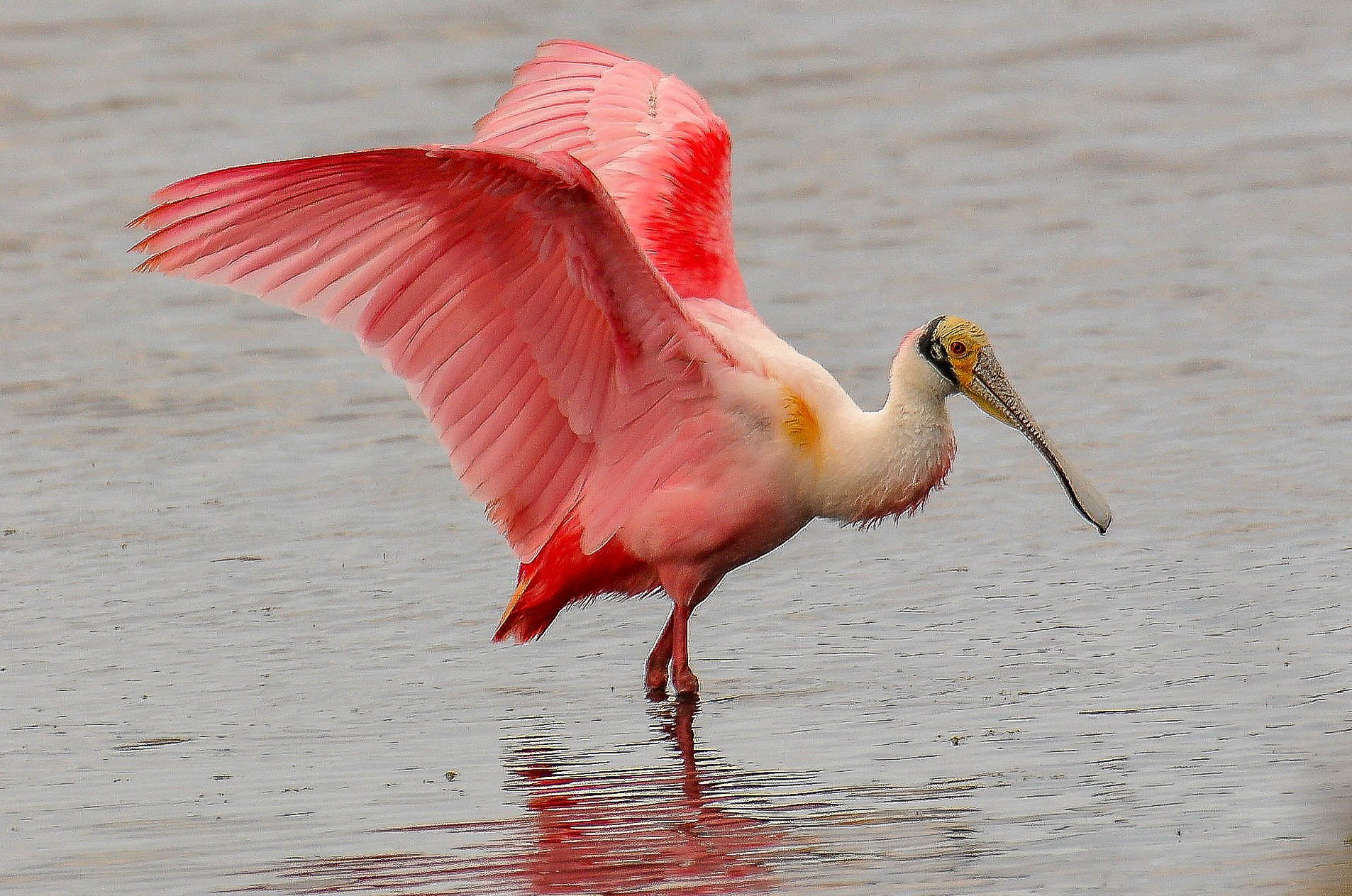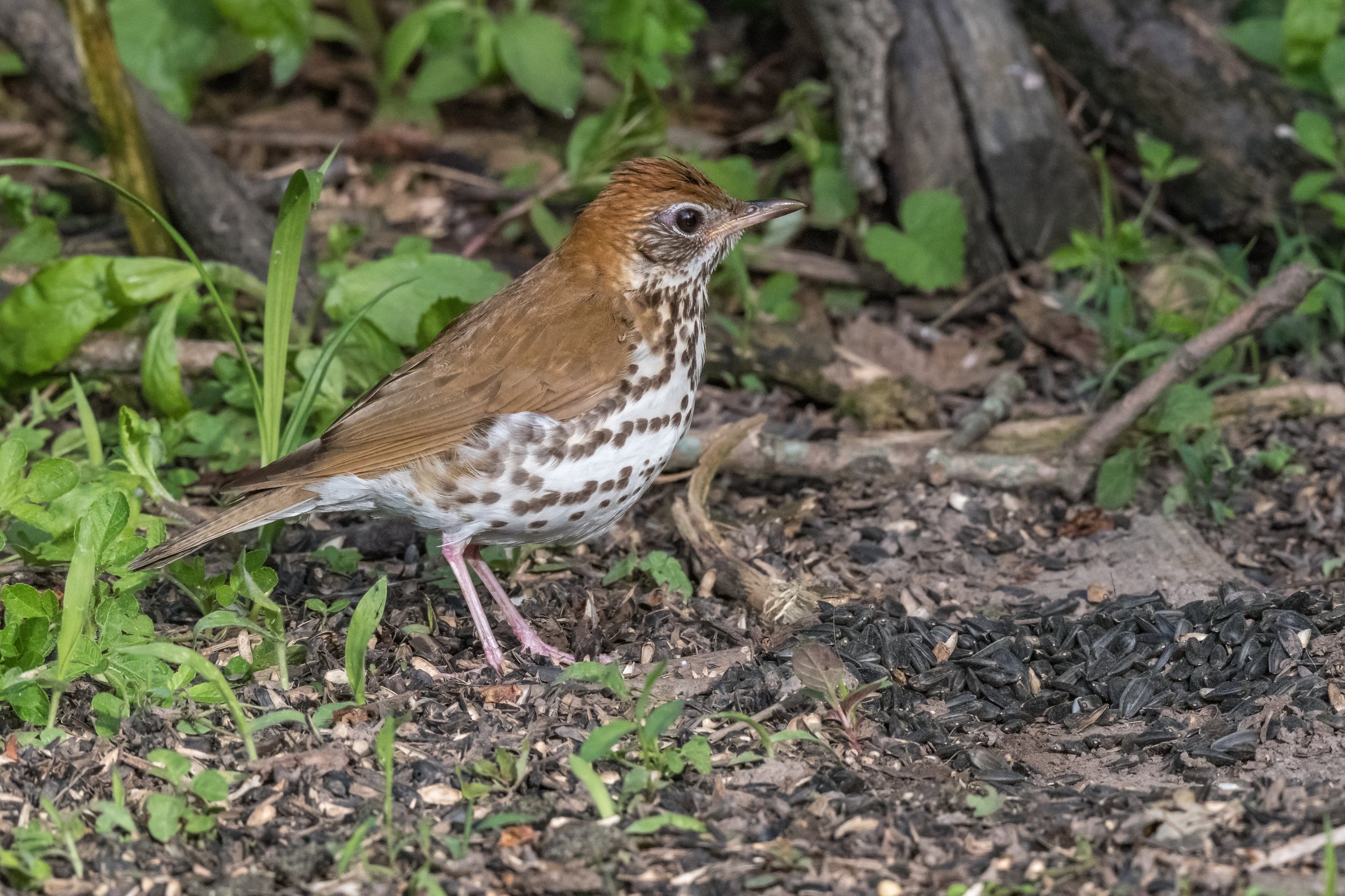Hart Rufe shared his vast birding knowledge with the St. Lucie Audubon Society for many years. His skills and good humor will be dearly missed, but they were just part of a very full life. Read his obituary here.
TIME TO SAY GOOD-BYE
Racoons on the march
As you surely know, all things eventually come to an end. Now it is time for me to end Hart Beat columns. A combination of circumstances have all arrived at the same time to bring about this decision. My health has unfortunately deteriorated to the point where I am no longer able to get out and photograph birds in the manner that I would like. Our web-master, Mary Dodge, is moving to Maine and will soon be relinquishing the job of posting the St Lucie Audubon web-site. And finally, I find I am struggling each month to find fresh material and ideas for these columns. This may have more to do with my lack of imagination than anything, but I am finding it more difficult each month not to regurgitate material I have covered before.
So, with that introduction, I am presenting this final column featuring some of the favorite photos from all the past columns, while also featuring many of the favorite locations where I have birded these past years. While I have been limited to nine photos in these columns, I have asked for and received permission to post more for this last reminiscence.
Starting with the photo that got these columns started, this phalanx of racoons (top of page) was marching down the road at the T. M. Goodwin Wildlife Management Area in the middle of the afternoon. The photo was subsequently picked up by the comedy show Parks and Recreation, starring Amy Poehler, that ran for a number of seasons when I first started writing these columns. The writers decided to publish a book about the town featured in the show, which claimed to have a racoon problem. My racoon photo was on the cover of the book and reprinted again inside the book. They sent me a copy of the book which was hilarious. However, it did not make any best-seller list, and certainly was not covered by the New York Times Book Review.
The second column featured the Sandhill Cranes nesting on an island in our Florida condo complex (photo 2). I loved the way this little Crane chick looked out at the world, while Mom seems to be warning, “Don’t you even think about coming after junior.”
The rare yellow Northern Cardinal (photo 3) showed up in the back yard of Ty Ryker and his wife in Port St Lucie. They very graciously invited me into their home and allowed me to photograph the bird on multiple occasions. Their backyard was a birding oasis in a well-developed area, and I photographed quite a number of wonderful birds there.
In our earliest years in Florida, probably shortly after the year 2000, Jewel and I joined a St Lucie Audubon field trip to Sam and Allie Comer’s home in western St Lucie County to see the many Painted Buntings they had coming to their feeders there. We became good friends with the Comers and I have spent many hours at their home watching and photographing many different species of birds. I learned they had a Barn Owl (photo 4) coming into an outdoor storage shed on the rear of their property, where the owl would deposit its scat to let them know it had been there. I set up an elaborate lighting system in the shed and had my camera inside a blind just outside the shed where I could take photos of the owl when it showed up. The flash startled the owl, so I only got a few images, but I was well pleased with the result.
I later learned that Sam had a second bird feeding station set up at his office in White City. I also spent many hours photographing birds there. The Painted Buntings (photo 5) loved his feeders at that location.
Merritt Island National Wildlife Refuge (MINWR) in Titusville has always been one of our favorite birding locations. I have hundreds of photos from Merritt Island, including Reddish Egrets, Cinnamon Teal, a myriad of more common ducks, egrets, herons, hawks, Bald Eagles, you name it. However, as representative of the Refuge, I chose this Roseate Spoonbill photo (photo 6) and a female Belted Kingfisher photo (photo 7). We have always birded our way from Titusville out to the Refuge, stopping along the shore, and checking out the lakes on the way.
After completing the Refuge, we often bird Biolab Road along the shore of the Northern Indian River. From there, we proceed out to Playalinda Beach for the sandpipers and shore birds along the Atlantic Ocean. Coming through the admissions gate to the beach we check for, and usually find, the Florida Scrub Jays that hang around that location. After a brief stop at the National Park Visitors Center, to check what other birders have reported seeing, we finish up our trip by birding East Gator Road and sometimes West Gator Road as well. Birding MINWR can be a very long day. And I haven’t even mentioned, until now, Viera Wastewater Treatment area, 20 miles south of Titusville, another wonderful birding location.
When we are birding along Route A1A on the north side of the Indian River on our way to Vero Beach, we often see Magnificent Frigatebirds soaring on the updraft winds coming off the ocean and hitting the many high rise apartment buildings along the shore. Sometimes we see them high overhead along the shore heading south. A number of years ago we discovered that the Frigatebirds (photo 8) nest on a small island just off the shore at Sewells Point, a few miles south of Fort Pierce. Our good friends, Deena and Dana Wade, kindly offered to have Dana take me out to the island in his boat to get close enough for this photo. I just love it when they inflate their red throat patch. This photo shows one bird with the throat patch inflated, and one without the inflated patch.
In Boynton Beach, two of our favorite Florida birding locations, Green Cay Nature Center and Wetlands, and Wakodahatchee Wetlands are located only a few miles apart. While both can be covered in a single day, it is very easy to find enough birding activity to spend an entire day at either one alone. One memorable photo I have from Green Cay is this Merlin (photo 9) seen stretching his wings. He put on a wonderful show for us.
Farther south, in the Everglades, at one of the many birding locations established by the National Park Service, is the Anhinga Trail. In the parking lot for this trail, both Black and Turkey Vultures (photo 10) sit in the trees above the cars, waiting for some unsuspecting car owner to forget to cover his or her car with one of the large blue tarpaulins provided by the Park Service. The unprotected car will be attacked by the vultures who love to pick at the rubber lining around the windshields and pull it out. They have the capability to do significant damage to unprotected cars. I was fortunate to get this photo of both species in flight in close proximity. The National Park Service sent me a letter asking permission to use this photo. Their explanation was that they would display the photo in their bird identification kiosks in National Parks all across the country where both species commonly occurred. I gave them the requested permission, but have never checked to see if they ever used it as they suggested they would.
One of the most difficult photos to take, in all of the bird world, is one of the male Red-cockaded Woodpecker (photo 11) flashing his red-cockade. The term “red-cockade” stems from the French Revolution. Red ribbons, or small pieces of material in their caps, were worn by supporters of the Revolution. At Three Lakes Wildlife Management Area near Keenansville, on the way to Joe Overstreet Road, one of our favorite birding locations, there is a colony of Red-cockaded Woodpeckers.
Birders need to be at the site early in the morning to see the birds, as they disperse from their nesting holes fairly quickly. On the morning I took this photo, I took over 600 photos of Red-cockaded Woodpeckers, presumably both males and females. In only three of those photos did a male Red-cockaded Woodpecker show his red-cockade. My frequent birding and photography companion, Linda Sullivan, was not fortunate enough to get any photos of the red-cockade even though she took just about as many photos of the birds as I did.
In recent years, perhaps our favorite birding location in Florida is the T. M. Goodwin Wildlife Management Area, a few miles outside of Fellsmere. It is sometimes called the Stick Marsh, although that term really applies to a larger area, popular with fishermen, that can also be accessed from the parking lot at the entrance to the Goodwin area. The Goodwin WMA is only open on Thursdays from 9 am until 4 pm, and the timing is strictly enforced. This past winter a Vermilion Flycatcher (photo 12) showed up at Goodwin, and was spending time around the parking lot, hanging out with a number of Savannah Sparrows at that location.
On January 5, 2023, when we went to look for the bird, we arrived at the parking lot to find many birders already searching. Unfortunately, they were going about it in the wrong way. They were out of their cars walking all along the fence where the bird reportedly was usually found. There was not a bird in sight. We proceeded on into the WMA area, and had a good day of birding. However, we left the WMA area early and returned to the parking lot to look for the flycatcher. Now there were no cars in the parking lot, as all the birders were still in the WMA area. The Vermilion Flycatcher was on the fence, as advertised, along with a cadre of Savannah Sparrows. On one occasion he flew down, picked up this caterpillar, and gave me this wonderful photo opportunity.
Marek Plater has been a friend of mine for over 50 years. He and his wife, Julie, now, as snowbirds like us, winter near us in Florida and the four of us spend as much time together as we can. Upon retirement, Marek and Julie, moved to a lake in Maine where Common Loons (photo 13) live and raise their young. I have spent a number of weeks over a number of summers trying, unsuccessfully, to take a photo of baby Loons riding on their parents’ backs. I have many wonderful photos of Loons, and baby Loons, just never riding on their parent’s back. The New York Times recently published a birding article about “nemesis birds.” I have been asked what my “nemesis bird” is. I don’t really have a nemesis bird, but I do indeed have a “nemesis photo.”
One of my favorite birding locations over the years has been the bird feeding station in front of the brush pile on our Pennsylvania farm. I have been fortunate to take many very satisfying photos from my photography blind set up there just for that purpose. One of my favorite photos from that location is this beautiful Wood Thrush (photo 14). He only appears there a few times in the early spring, when natural foods are still hard to find, but the meal worms we supply are a real attraction. Fortunately, we hear him singing in the nearby woods well into the summer and his calls are an absolute delight.
Finally, the Red-headed Woodpecker (photo 15) in our front yard, which was the topic of the last Hart Beat column before this one, generated more comments and responses than any previous column I have written in all these 13 years that I have been writing them.
It has been a joy and pleasure for me to write these columns, and I have been fortunate to have developed many wonderful birding and photography friends through this endeavor. I have been birding since I first became a Boy Scout in 1945 and had a Scoutmaster who was a birder.
Now having passed my 91st birthday, I look back on all those years, and only have one regret: that I did not discover bird photography until about 2008. How many wonderful species I might have been able to photographically record on so many trips to so many different locations, from Antarctica to Hudson Bay, and from Ecuador to Switzerland, and all across the United States, if only I had been into photography as well as birds. As I say my final goodbye, I thank all of my Readers for the wonderful support, comments and responses you have given me over these past years. But now it's time to say goodbye.
###
HART BEAT: NEW YARD BIRD
Red-headed Woodpecker (1)
What an exciting day it is when a new unexpected bird species takes up residence on any birder’s home property. We recently had this experience when a Red-headed Woodpecker pair showed up and started a family in an old dead Ash tree in the woods just over our property line. The pair spent a considerable amount of time in our front yard being literally, “yard birds” (above). As we watched them fly into the woods, we noticed they frequently went to the top of several dead trees clumped together where, even at a great distance, they stood out (photo 2).
As we watched them more and more, we noticed that they were flying into a couple of ash trees at the edge of our yard that we have paid considerable sums of money to save from the deadly Emerald Ash Borer. This is where we got the first photos of the birds in the trees (photo 3). Then they began flying down to the ground and up into the lower part of the trunks of several trees bordering our yard, where we were able to get a number of photos, includ-ing this lovely portrait shot (photo 4). Note: I say “we” because while I took most of these shots, Jewel took some of them, and I frankly don’t remember which are hers and which are mine.
As both the male and female Red-headed spent more and more time in our yard, we began to wonder what they were finding there. You can imagine our surprise when we discovered they were pretending to be Robins, eating worms (photo 5). A little research disclosed that Red-headed Woodpeckers have a very varied diet. They eat in-sects, spiders, earthworms, nuts, seeds, berries, wild and cultivated fruits, and occasionally small rodents. They have also been known to eat eggs and nestlings of other birds, and sometimes even eat bark from trees.
With some diligent watching of the pair coming and going, we were able to discover the location of the Red-heads nest. It was located just under the broken off branch of a dead ash tree (photo 5). Jewel spent several hours watch-ing the pair coming and going to the nest site hoping to get a photo of one of the young birds peering out of the hole. She took a great many photos of the empty hole (photo 6), but none disclosed any young birds. Young Red-headed Woodpeckers have brown heads and are quite easily distinguished from their parents.
In the first few weeks after their arrival at our property they flew back and forth from our yard to the trees border-ing the yard. This afforded an excellent opportunity to see the tremendous amount of white on their backs and wings they displayed as they flew (photo 7). On the few occasions when we were able to see the underbelly as well as the wings in flight, the amount of white on them was even more pronounced (photo 8).
More recently we have found they are no longer frequenting our front yard as they were earlier. We don’t know what has caused this change in their behavior, but they are now spending almost all of their time in the woods and around the nest hole.
Finally, after taking a great many photos from my photography blind set up in our front yard, the Red-headed Woodpecker seemed to be annoyed by the constant clicking of my camera. He, or she, as they, unlike any other woodpecker species, are both identical and can only be told apart as to male or female by DNA, looked at me with this quizzical look, which seemed to say, “What are, you, some kind of sick voyeur?” (Photo 9) Probably the female.
Finding a new species in the yard is a little like winning the lottery. You create a bird friendly space for birds and have high hopes they will see it that way, much like simply buying a lottery ticket. When some birds start coming around it is interesting to note that your plan seems to be working, much like occasionally winning a small amount with one of your lottery tickets. Then when a really uncommon species, such as a Red-headed Woodpecker sets up shop in your yard, it’s like hitting a sizable jackpot. Not quite enough to retire on, but certainly enough to make you more comfortable and life more enjoyable.
To hit the mega-millions jackpot in bird terms, you would have to have a mega-rarity species begin to use your yard for its home. Perhaps a species like last month’s rare bird, the Large-billed Tern, arrive and actually begin nesting in your yard. Something like a one in 500 million or more chance. In other words, it isn’t going to happen, so a Red-headed Woodpecker nesting in the yard is as close to winning the lottery as it’s ever going to get. We will enjoy it while it lasts.
For more on Red-headed Woodpeckers, see a previous Hart Beat column on the difference between Red-headed and Red-bellied Woodpeckers.

























